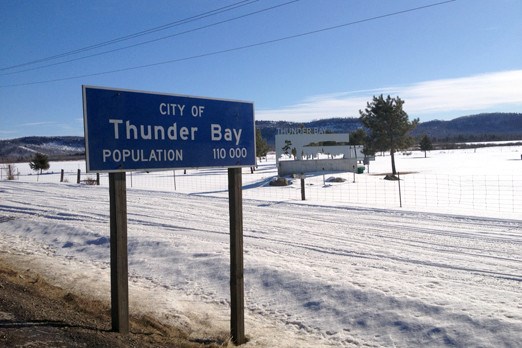Mayor Keith Hobbs and Thunder Bay Chamber of Commerce president Harold Wilson say while the 2011 census shows the city’s population has receded since 2006, there are plenty of positive indicators suggesting the city is on the grow.
But it will be the continued growth in the Ring of Fire that determines how rapid that growth will be.
“We’ve got to tap that resource, work with our First Nations partners and get that kind of thing going. The mining industry is going to save us,” he said.
“The Ring of Fire has to pan out. That’s where we really have to do our work, with the two levels of government above us, the province and the federal (government). “
Hobbs, echoing the words of Lakehead University economist Livio Di Matteo, said Thunder Bay has proven itself to be resilient in the midst of a crushing forest industry collapse that saw both employment and the gross domestic product plummet 10 per cent, but population in the census metropolitan area fall by just 1.1 per cent.
According to figures released Wednesday by Statistics Canada, Thunder Bay’s CMA population dropped from 122,907 in 2006 to 121,596 last year.
Taking just Thunder Bay proper into account, the number of residents fell from 109.160 to 108,359, a 0.7 per cent drop. Overall Northwestern Ontario’s population fell 4.7 per cent. Ontario, as a whole, increased 5.9 per cent.
Wilson said if he was a betting man, he’d have lost. But like the mayor, the economic indicators he’s seeing tend to tell a different story.
“I think that positivity is going to result in some much better numbers because when you look at something and there’s been a drop in population, that’s not being borne out by what we’re seeing in terms of housing stock and the demand for housing right now. It’s at an all-time low.”
Wilson added there’s been an increase in the labour force, there seems to be more traffic on the streets on evenings and weekends, and retailers are seeing more people in their stores.
“We’re hearing the same thing from the restaurant trade, from a lot of the services that are out here. Those things are quite buoyant. There’s a lot of growth happening, so I doubt that (the census) is an indication of what’s going on right now,” Wilson said.
Hobbs, who has said many times he wants the city to grow by 5,000 people in rapid fashion, also pointed to net migration figures, especially in the under-25 crowd , which are adding to, not taking away from, the population totals.
“The incremental efforts we’ve made in health care, research, manufacturing, the knowledge-based sector, mining and as a regional sector are paying off and will continue to build our city in a way that’s sustainable, and we hope will have benefits for the region as well,” Hobbs said in a prepared speech delivered to media Wednesday afternoon at city hall.
Hobbs also questioned the federal government’s methodology.
“How many people didn’t fill out the census? That’s something we don’t know,” Hobbs said. “When you’re looking at a small figure like this, a small decline, it could have an impact as well as the aging population.”
Di Matteo called the numbers disappointing, saying he wasn’t expecting as large a population decline.
“Activity does appear to have picked up in the region, particularly in the last year, year-and-a-half,” he said. “However population is a lagging indicator. I think the best way to interpret these numbers is possibly what’s happened is that the population really bottomed out several years ago and has been increasing, but it still has not passed its level of 2006.”
He’s not surprised, saying the five-year period is where the brunt of the aftermath of the forestry collapse was felt.
Thunder Bay actually made out well, compared to other communities in the region.
“Employment in the region outside of Thunder Bay dropped by almost 30 per cent, so you would expect that to have some influence on population. What is reassuring is that despite the large employment losses, the population declines haven’t been as large.”
Thunder Bay’s unorganized municipalities, in fact, topped the nation in population decline in the census subdivision category, its growth rate falling by 10.1 per cent. Hearst was third with a 9.4 per cent loss, while Dryden was sixth, losing 578 people, or 7.1 per cent.
Marathon lost 510 residents in the past five years, a 13.2 per cent drop, while Shuniah has 176 fewer people, six per cent less than it did in 2006. Neebing was also down 198 people, a 9.1 per cent drop, while Oliver Paipoonge dropped 0.4 per cent, a total of 25 people.
Follow Leith Dunick on Twitter: @LeithDunick
